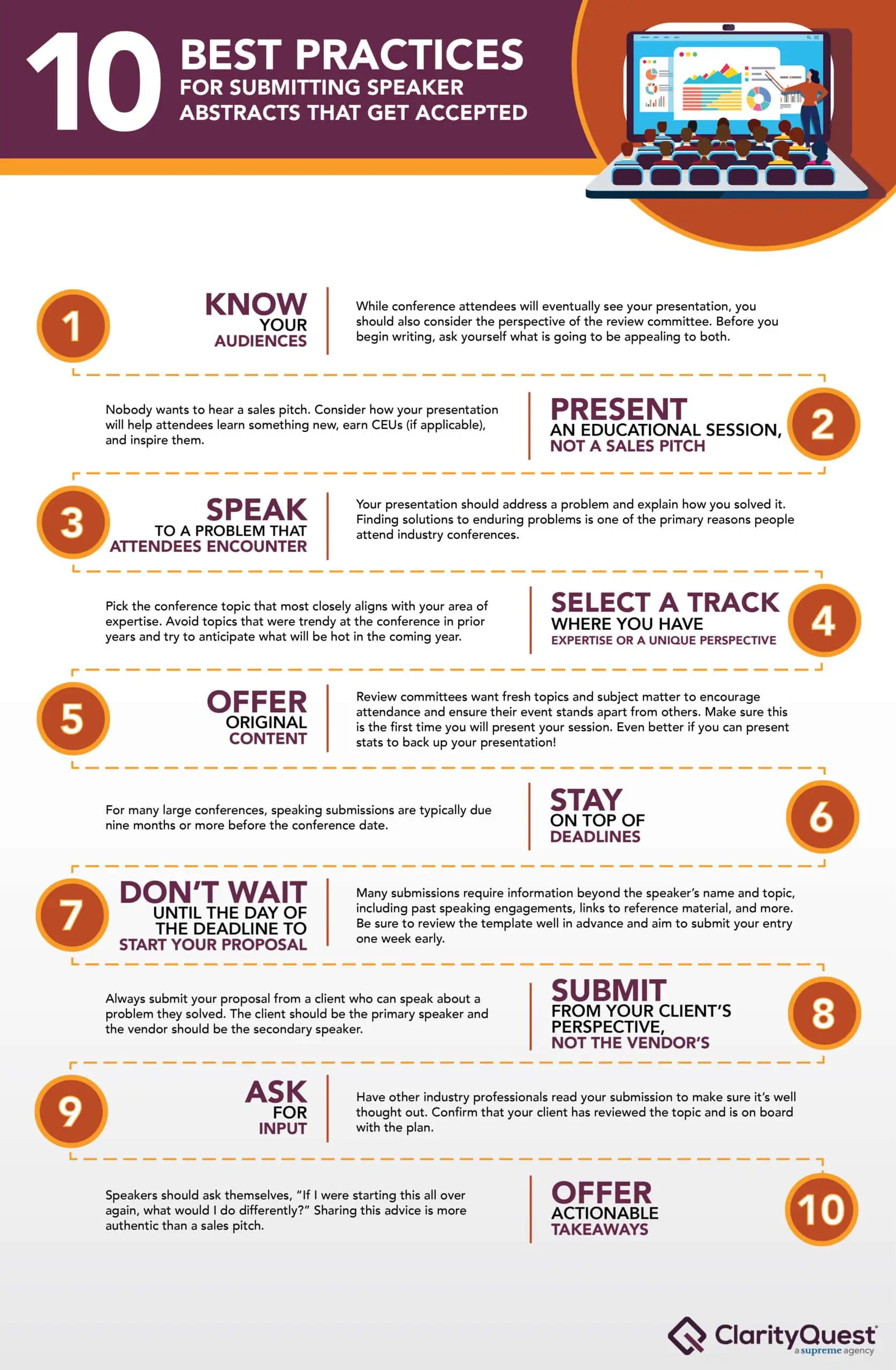Conferences, trade shows, and industry events are valuable opportunities for health tech and life science companies to build brand awareness, provide thought leadership, generate leads, and form new relationships.
Preparing for a show involves budgeting, developing a presence, and planning for speaking engagements well in advance of the event.
Even before you have a show picked out to submit a speaker for, marketers should have a go-to list of clients with whom to partner for future speaking opportunities. When onboarding new clients, B2B marketers should set the expectation
Speaker proposals that point to real-world success metrics will always have an edge. With extensive experience successfully preparing for large industry conferences such as HIMSS, AHIMA, BIO, and AACR, here are some of the expert tips our health tech public relations agency has gathered.
10 best practices for submitting speaker abstracts that get accepted
1. Know your audiences. While conference attendees will eventually see your presentation, you should also consider the perspective of the review committee. Before you begin writing, ask yourself what is going to be appealing to both.
2. Present an educational session, not a sales pitch. Nobody wants to hear a sales pitch. Consider how your presentation will help attendees learn something new, earn CEUs (if applicable), and inspire them.
3. Speak to a problem that attendees encounter. Your presentation should address a problem and explain how you solved it. Finding solutions to enduring problems is one of the primary reasons people attend industry conferences.
4. Select a track where you have expertise or a unique perspective. Pick the conference topic that most closely aligns with your area of expertise. Avoid topics that were trendy at the conference in prior years and try to anticipate what will be hot in the coming year.
5. Offer original content. Review committees want fresh topics and subject matter to encourage attendance and ensure their event stands apart from others. Make sure this is the first time you will present your session. Even better if you can present stats to back up your presentation!
6. Stay on top of deadlines. For many large conferences, speaking submissions are typically due nine months or more before the conference date.
7. Don’t wait until the day of the deadline to start your proposal. Many submissions require information beyond the speaker’s name and topic, including past speaking engagements, links to reference material, and more. Be sure to review the template well in advance and aim to submit your entry one week early.
8. Submit from your client’s perspective, not the vendor’s. Always submit your proposal from a client who can speak about a problem they solved. The client should be the primary speaker and the vendor should be the secondary speaker.
9. Ask for input. Have other industry professionals read your submission to make sure it’s well thought out. Confirm that your client has reviewed the topic and is on board with the plan.
10. Offer actionable takeaways. Speakers should ask themselves, “If I were starting this all over again, what would I do differently?” Sharing this advice is more authentic than a sales pitch.
Bonus tip: Consider local and regional events. Securing a speaking engagement at a major conference is competitive and expensive. You can test your message and gain experience at a local event for a fraction of the cost.
Measuring event success
Speaking engagements at leading industry conferences should be part of your company’s strategic marketing plan, especially for organizations seeking to build thought leadership for their executive team as part of a broader public relations campaign.
And while we’re on the subject of trade shows, don’t forget to track the ROI of your trade show spend.
Note: This blog post was originally posted on March 4, 2020, and has been updated to reflect current trends.



